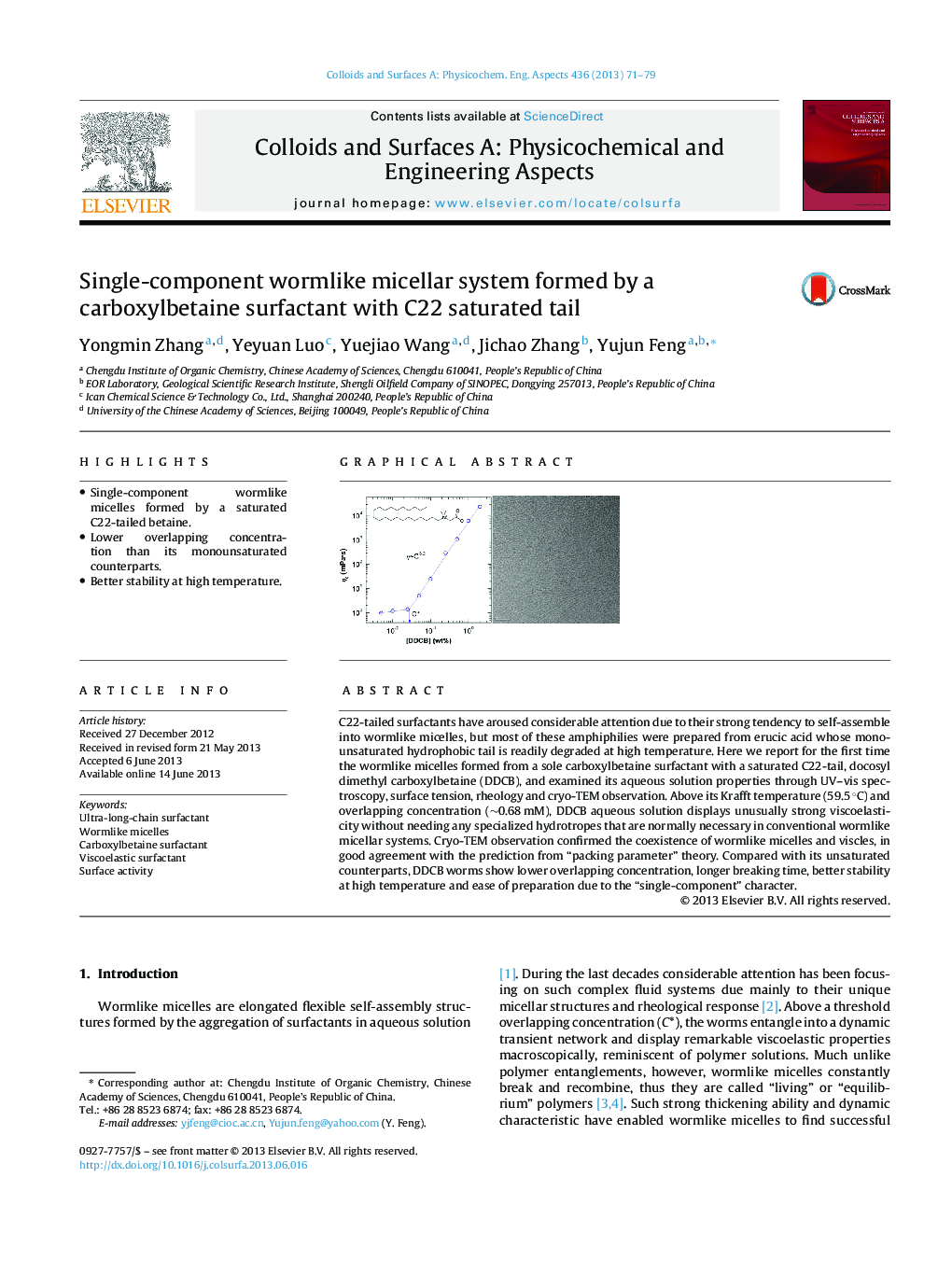| Article ID | Journal | Published Year | Pages | File Type |
|---|---|---|---|---|
| 593327 | Colloids and Surfaces A: Physicochemical and Engineering Aspects | 2013 | 9 Pages |
•Single-component wormlike micelles formed by a saturated C22-tailed betaine.•Lower overlapping concentration than its monounsaturated counterparts.•Better stability at high temperature.
C22-tailed surfactants have aroused considerable attention due to their strong tendency to self-assemble into wormlike micelles, but most of these amphiphilies were prepared from erucic acid whose mono-unsaturated hydrophobic tail is readily degraded at high temperature. Here we report for the first time the wormlike micelles formed from a sole carboxylbetaine surfactant with a saturated C22-tail, docosyl dimethyl carboxylbetaine (DDCB), and examined its aqueous solution properties through UV–vis spectroscopy, surface tension, rheology and cryo-TEM observation. Above its Krafft temperature (59.5 °C) and overlapping concentration (∼0.68 mM), DDCB aqueous solution displays unusually strong viscoelasticity without needing any specialized hydrotropes that are normally necessary in conventional wormlike micellar systems. Cryo-TEM observation confirmed the coexistence of wormlike micelles and viscles, in good agreement with the prediction from “packing parameter” theory. Compared with its unsaturated counterparts, DDCB worms show lower overlapping concentration, longer breaking time, better stability at high temperature and ease of preparation due to the “single-component” character.
Graphical abstractFigure optionsDownload full-size imageDownload as PowerPoint slide
